News
Altcoin News
Altcoin News
Browse all Altcoin related articles and news. The latest news, analysis, and insights on Altcoin.
Major Stablecoin Step from Three Major Japanese Banks
Japan's three major banks are taking a significant step in the stablecoin space. Mitsubishi UFJ (MUFG), Sumitomo Mitsui (SMBC), and Mizuho plan to issue stablecoins pegged to both the Japanese yen and the US dollar. According to Nikkei, the trio will initially launch a pilot application for Mitsubishi Corporation.What is the aim of the project?The project aims to create a common standard for corporate payments and cross-border transactions. This will make digital liquidity in yen and dollars accessible within the Japanese financial system through domestic banks. This could enable Japanese companies, particularly those operating in the export and energy sectors, to transition to faster and lower-cost payment infrastructures. The three banks have a combined total of more than 300,000 corporate clients, suggesting that the stablecoin project could find widespread adoption.Stablecoins are digital assets whose value is typically pegged to fiat currencies such as the US dollar. Their fast transfer capabilities, transparent reserve structure, and compatibility with smart contracts make them increasingly popular with both the crypto market and traditional financial institutions. The global stablecoin supply surpassed $300 billion as of last week, demonstrating the strong market confidence and demand.Japan, which has long maintained a cautious stance on crypto assets, has recently made significant regulatory changes. The Financial Services Agency (FSA) is accelerating regulatory approvals for yen-backed stablecoins. Japan Post Bank also plans to launch a tokenized deposit system called DCJPY by fiscal 2026.In addition to Japan, activity has increased across Asia. South Korea is preparing legislation to regulate stablecoin issuances, while Hong Kong is launching a new regime for licensed stablecoin companies. Ripple and SBI plan to launch a dollar-pegged token called RLUSD in Japan in early 2026.Meanwhile, in the US, the GENIUS Act established the first comprehensive federal framework for stablecoin companies. Regulators believe this model could serve as a model for other countries, with US Treasury Secretary Scott Bessent predicting the global stablecoin market could surpass $2 trillion by 2028.

Bitcoin at $105,000: JPMorgan Explains Reason for Decrease
A sell-off continues in the cryptocurrency market. The price of Bitcoin fell to $105,000 as of the morning of October 17th, its lowest level since early September. This decline was fueled by both the re-escalation of trade tensions between the US and China and signals of weakness in US regional banks. Ether fell 1.5% to $3,928, while other major cryptocurrencies such as BNB, XRP, and Solana followed suit. The Fear & Greed Index, which measures market sentiment, fell to 22, indicating that investors are in the "extreme fear" zone. This sentiment is also paralleled by the uncertainty in US stock markets.Statements regarding bad loans from regional banks in the US, particularly Zions Bancorp and Western Alliance Bancorp, have brought the fragility of the financial system back into the spotlight. Furthermore, US President Donald Trump's statement, "We are in a trade war with China," has created a new wave in the markets. These statements have created selling pressure on all risk assets, from stocks to crypto. Presto Research analyst Min Jung said, “The market is completely driven by headlines surrounding the US-China trade war. The state of regional banks is also damaging investor confidence.” Vincent Liu, investment director at Kronos Research, commented, “While BTC and ETH are more resilient than stocks, any macro shock can quickly reverse the market due to low liquidity.”JPMorgan explains the reason behind the decline in Bitcoin and altcoinsHowever, according to JPMorgan analysts, the main reason for this sharp decline in recent weeks is crypto-specific investor behavior rather than external developments. The bank's analysts note that last week's liquidations largely came from "crypto-native" traders, while traditional ETF investors and institutional players did not sell heavily during this period.According to JPMorgan data, there was a net outflow of only $220 million from Bitcoin ETFs and $370 million from Ethereum ETFs between October 10-14. These figures represent a very small fraction of total assets under management. In contrast, open interest in the perpetual futures market, which is heavily used by crypto investors, fell by 40% in dollar terms. Analysts describe this data as "a wave of liquidations sharper than price declines."Last week, markets experienced the largest liquidation in history, wiping out more than $20 billion in leveraged positions. The closing of over 1.5 million positions in just one week shook the market. Bitcoin is currently trading around $105,000. JPMorgan predicts that interest rate cuts or new spot ETF approvals could spark a recovery in the fourth quarter, but volatility will remain high in the short term.
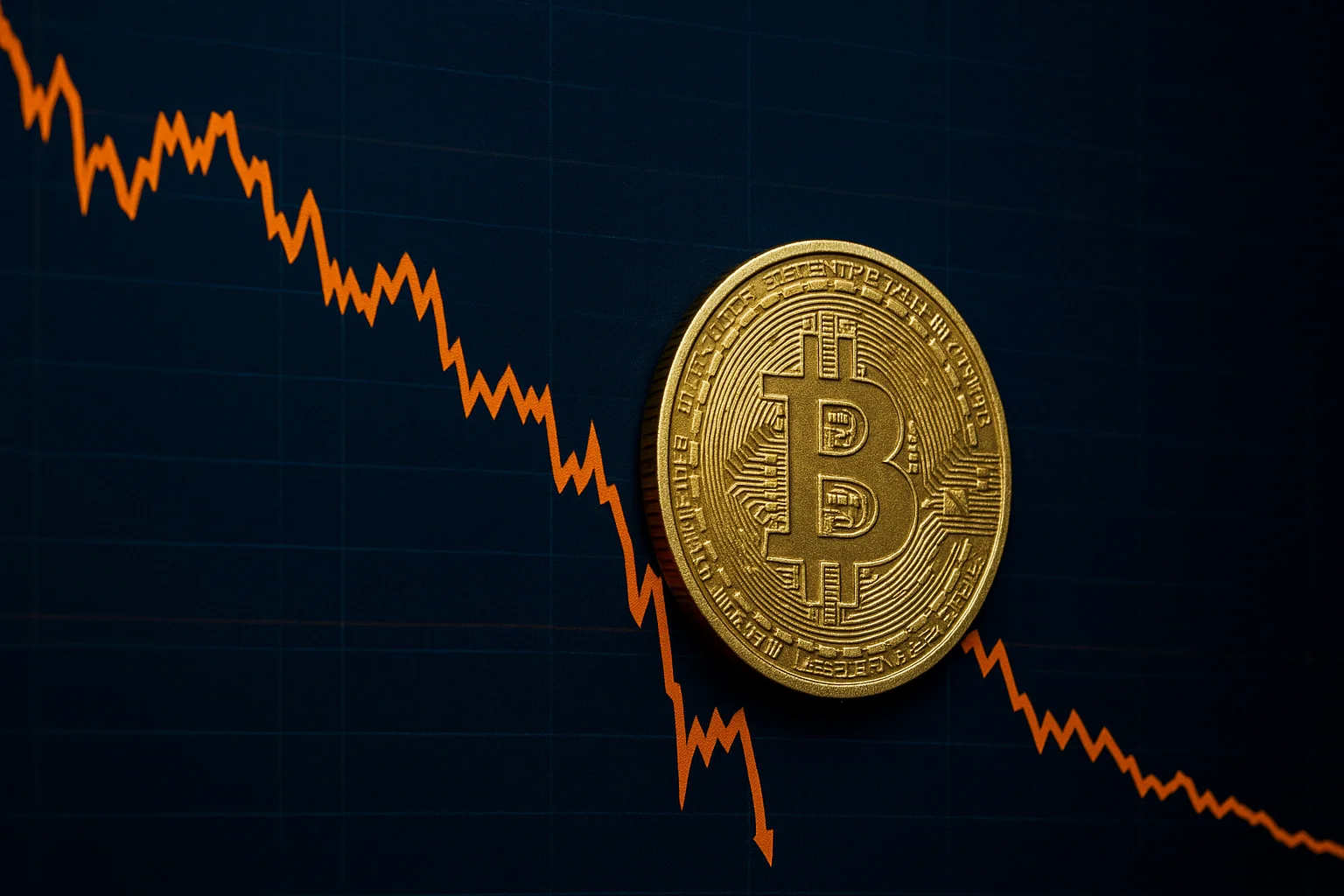
ID Comment and Price Analysis - October 16, 2025
ID Technical Outlook Falling Channel Structure According to the chart, we can say that ID has still been trading inside a falling channel structure for a long time; the price has recently approached the upper border of the channel again. Reactions from the level signal a higher probability of a breakout.The current price is around the level $0.1682, suggesting a short-term positive outlook.The nearest support stands at the level $0.1664 in the short term now. Holding above this support could pave the way for the range between the levels $0.1900–$0.1984. This zone is crucial for a potential breakout as it aligns with the upper border of the channel. The price of the coin is likely to aim for the levels $0.2238, followed by $0.2524–$0.2635 if it sees daily closes above $0.1984.According to a bearish scenario, the first support to follow is $0.1487; below it, the price could pull back to the levels $0.1343 and even $0.1170.If the channel breaks to the upside, the technical target would be a move equal to the channel’s height, potentially pushing the price into the $0.30–$0.36 range in the medium term.Summary:Current price is around $0.1682Holding above $0.1664, the price targets $0.1900–$0.1984Holding above $0.1984 could open the way for $0.2238 and $0.2524–$0.2635Below $0.1487, the price could test $0.1343 and $0.1170A breakout of the channel makes $0.30–$0.36 potential targetsThese analyses, not offering any kind of investment advice, focus on support and resistance levels considered to offer trading opportunities in the short and medium term according to the market conditions. However, traders are responsible for their own actions and risk management. Moreover, it is highly recommended to use stop loss (SL) during trades.

What is Ethena USDe (USDe)?
In the crypto world, stablecoins have long been used as the digital equivalent of the dollar; however, most still rely on traditional financial institutions and bank reserves. Ethena USDe is taking a different path. Developed by Ethena Labs, USDe stands out as an innovative stablecoin, operating entirely on-chain and supported by the "synthetic dollar" model. Launched in March 2024, the project quickly gained significant traction and became a pioneer of the "yield-generating stablecoin" movement in the decentralized finance (DeFi) ecosystem. In this guide, we will thoroughly explore how Ethena USDe works, its delta-hedged strategy, the Internet Bond concept, the ENA token, and its future roadmap.Definition and Origin of Ethena USDeEthena USDe (USDe) is a digital stablecoin based on the "synthetic dollar" model, collateralized and offset by on-chain derivative transactions. In short, the Ethena protocol offers a completely crypto-focused, decentralized dollar solution as an alternative to traditional stablecoins. USDe is pegged to a value of $1 using financial engineering techniques and allows users to earn yield while maintaining this value.Developed by Ethena Labs, the USDe project was first introduced in March 2024. The Ethena Labs team is comprised of experienced professionals in financial engineering, derivatives markets, and risk management. Led by CEO Guy Young, the team is based in London and includes experts from previous positions at institutions such as Morgan Stanley, Jump Trading, and Chainlink Labs. Shortly after its launch, the project gained significant traction, becoming one of the largest stablecoin projects by market capitalization.USDe's primary goal is to address the problems of decentralization and reserve transparency that are common in the stablecoin market. While many existing stablecoins rely on traditional financial institutions or bank reserves, Ethena aims to create a dollar that runs entirely on the blockchain and is independent of the traditional banking system. With their "internet bond" vision, the team aims to create a digital dollar that both generates returns and maintains a price fixed at $1. This allows users to generate passive income while using a reliable store of value within the crypto ecosystem. The USDe price, as seen below, has remained stable around $1 since its launch. Ethena is considered a pioneer in the "yield-bearing stablecoin" category. USDe integrates with popular DeFi platforms such as Aave, Pendle, MakerDAO, and Uniswap and is actively used in these ecosystems. For institutional investors in particular, USDe aims to be a secure gateway to the world of decentralized finance. Traditional financial players can participate in blockchain-based applications with a transparent, dollar-denominated stablecoin through USDe.Ethena USDe History: Key MilestonesSome key events and developments in the brief history of Ethena USDe are as follows:March 2024: Ethena Labs launched USDe's mainnet. The first public version was launched after closed testing, generating excitement in the DeFi community.April 2024: USDe was listed on major cryptocurrency exchanges like Bybit. (During the same period, Ethena Labs' governance token, ENA, was also available to users on major platforms like Binance.) This rapidly increased USDe's liquidity and accessibility.May 2024: Ethena introduced the innovative concept called "Internet Bond." Thanks to this feature, users began earning returns by staking their USDe. In other words, USDe not only maintained its value but also became a regular earning tool.July 2024: The Ethena protocol reached a major milestone by surpassing $3 billion in total locked value (TVL). Reaching such a high TVL in a short time demonstrated the trust and interest in the project.Late 2024: USDe, with its "staking + delta-hedging" model, began to be recognized as one of the most innovative stablecoin assets in the crypto market towards the end of the year. Many analysts described USDe as a groundbreaking example in the stablecoin space. 2025: Ethena began integrating with infrastructures like LayerZero and Chainlink to increase compatibility across different blockchains. This aimed to enable USDe to operate seamlessly across multiple chains and reach a wider audience.Why is Ethena USDe Important?Several aspects distinguish Ethena USDe from other stablecoin projects and make it significant. For example, unlike traditional stablecoins like USDT or USDC, Ethena maintains its $1 value entirely through on-chain mechanisms, without relying on a central issuer. This offers a significant alternative in terms of decentralization and censorship resistance.On the other hand, USDe, thanks to its "delta-hedged" strategy, maintains its value while offering users regular returns (yield). This feature has opened up a new way to generate passive income in the DeFi ecosystem. Holding stablecoins now makes sense not only for storing value but also for earning returns.Additionally, Ethena's "synthetic dollar" design is based on delta hedging, a technique used in traditional financial markets. The protocol balances assets held in spot markets (such as ETH) with short-term derivative (futures) positions of the same amount. This creates a highly price-stable asset that is resilient to market fluctuations. Open interest rates in BTC and ETH in Ethena's fund between 2021 and 2024 The Ethena protocol regularly publishes its reserves and collateral ratios on-chain. This means the collateral behind USDe can be viewed and audited by anyone. This transparency increases user trust and minimizes questions about stablecoin reserves.Ethena aims to appeal to individual crypto users as well as funds, derivatives investors, and other institutional players. With its slogan, "DeFi-compatible dollar," it aims to offer a regulatory-friendly and reliable digital dollar alternative that aligns with the needs of the traditional financial world. This could make USDe a tool for institutional-level payments and financial transactions in the future.Ethena Labs and the USDe EcosystemThe value of Ethena USDe is also driven by the ecosystem and Ethena Labs. Ethena Labs is a finance and blockchain engineering team led by CEO Guy Young. Based in London, this team focuses on developing innovative products in the decentralized finance space. The team includes experts with prior experience at leading institutions in both traditional finance and the crypto world, including Morgan Stanley, Jump Trading, and Chainlink Labs. This strong team is the brainpower behind the vision behind Ethena USDe.The Ethena project has received significant support from renowned crypto investors and companies. Dragonfly Capital, Binance Labs, OKX Ventures, and Bybit are just a few examples. Furthermore, financial giants such as BitMEX founder Arthur Hayes, Franklin Templeton, and Galaxy Digital have also provided various investments and support to Ethena. This broad investor base provides a significant indication of the project's credibility and potential.The Ethena community is growing and gaining a voice in the project. Ethena Labs is taking steps to transition to a decentralized governance model. The governance token ENA, issued as part of this initiative, will ensure that future protocol decisions are made through community votes. By holding ENA tokens, community members will have the right to vote on the protocol's development and significant changes. This means the Ethena ecosystem will eventually evolve into a DAO (Decentralized Autonomous Organization) structure.Ecosystem applications also contribute to the value of USDe. The ecosystem built around Ethena USDe includes a number of products and integrations. Some of these include:Internet Bond: This is the name given to the annual return system where users who stake USDe earn a set return. Staking USDe, in a sense, allows for regular interest income, similar to an "internet bond." Users can lock their USDe in the protocol and earn additional daily or annual income.Cross-chain integrations: While Ethena USDe initially runs on Ethereum, it is rapidly expanding to other chains. USDe can now be used on popular Layer-2 networks and sidechains such as Arbitrum, Optimism, and Base. These cross-chain integrations enable the seamless transfer and use of USDe across different platforms and applications.DeFi platform integrations: USDe is deeply integrated with many decentralized finance protocols. For example, USDe is actively used in futures transactions on Pendle, liquidity pools on Curve, and lending/borrowing on Aave. By working in harmony with protocols like Synthetix, USDe's liquidity and usage areas are expanded. This creates a rich usage network within the Ethena ecosystem, growing alongside other DeFi projects.How Does Ethena USDe Work?The operating principle of Ethena USDe is based on a clever strategy borrowed from the world of traditional finance. The protocol maintains the value of USDe at $1 through a delta-hedged stablecoin model. So, what does this mean, and how does it work? Let's explain it simply:The value of USDe is maintained by balancing the protocol's holdings with its positions in derivatives markets. To offset price fluctuations in collateral assets (such as ETH) received from its users, Ethena simultaneously opens short positions against these assets in the futures markets. This method creates a delta-neutral position. The steps are as follows:Collateral deposit: Users deposit ETH or similar crypto assets into the Ethena protocol as collateral. In exchange for this collateral, the protocol mints new USDe tokens and issues them to the user. Delta hedge position: The protocol simultaneously hedges the collateral it receives from the user. For example, if the user deposits 1 ETH of collateral, Ethena opens a short position of 1 ETH on centralized exchanges or supported platforms. This short position acts as insurance against price fluctuations of the ETH held as collateral.Price fixing: Thanks to this stabilization, the value of USDE remains approximately $1, regardless of whether the price of ETH rises or falls. How does this work? If the price of ETH rises, the protocol's ETH collateral gains value, but the short position loses value by the same amount – thus, the total value remains constant. Conversely, if the price of ETH falls, the value of the collateral decreases, but the profit from the short position is still made, preserving the total value. Consequently, the protocol's total portfolio value is fixed in dollars.Return generation: Ethena's delta-neutral strategy not only stabilizes the price but also generates returns. As the short position holder in futures markets, the protocol typically receives periodic payments called funding rates. In crypto markets, in particular, those who open long positions often pay funding fees to those who open short positions. Ethena accumulates the returns from these funding rates. It also earns staking rewards on the assets it holds as collateral (e.g., staked ETH). These revenues are shared proportionally with users who stake USDe. Summary of derivative transactions used for USDe. Source: Ethena/Docs Why is this model advantageous? Because USDe operates entirely through market-based mechanisms, without the need for bank reserves or fiat collateral. The value of collateral assets is protected by financial derivatives, ensuring decentralization. This minimizes the regulatory pressures and trust issues faced by traditional stablecoins. Thanks to this clever hedging mechanism, Ethena has created a stablecoin model that both maintains its 1:1 dollar value and generates income.Ethena USDe Use CasesIn addition to being used as a stablecoin to store value, USDe is also an active tool in various DeFi and cryptocurrency applications. Here are some of USDe's primary use cases:Collateral in DeFi protocols: USDe is accepted as collateral (collalateral) in decentralized finance platforms. For example, in lending and borrowing protocols like Aave, users can deposit USDe to obtain loans or use USDe alongside other stablecoins in liquidity pools like Curve. This has made USDe a reliable collateral tool in the DeFi world. Liquidity Provision (LP) and Yield Farming: USDe is an ideal asset for participating in liquidity pools on various platforms. For example, it's possible to become an LP (Liquidity Provider) by adding liquidity to pools consisting of trading pairs such as USDe/ETH or USDe/USDT. Liquidity providers receive a share of pool fees and can also earn various yield farming rewards. This offers additional earning opportunities for USDe holders.Passive Income Generation: Thanks to Ethena's Internet Bond system, users can earn passive income by locking and staking their USDe within the protocol. USDe staking offers a set annual percentage yield (APY) from the protocol's funding rate revenues and other earnings sources. This means earning dollar-denominated returns in a digital environment, similar to bank deposit interest. While USDe staking returns can fluctuate depending on market conditions, they represent an attractive income stream for users.Corporate Payment Solutions: The Ethena project aims to leverage USDe not only on crypto platforms but also in real-world applications in the long term. In particular, enabling corporate-to-company payments and international transfers to be made with USDe on the blockchain is a significant goal. This will enable traditional financial institutions to utilize the speed and efficiency of blockchain to facilitate seamless and low-cost dollar transfers through USDe. Once this vision is realized, USDe could become not only an investment and trading tool but also a global digital payment instrument. Ethena USDe Token EconomicsLet's take a closer look at the technical and financial features of Ethena USDe:Token Name: Ethena USDeSymbol (Ticker): USDeToken Standard: ERC-20 (runs on the Ethereum network)Collateral Type: ETH and similar high-liquid crypto assets (e.g., supported collateral such as stETH, wBTC)Value Peg: $1 (targeted at 1 USDe ≈ $1)Governance Token: ENA (the Ethena project's governance and incentive token)Total Value Locked (TVL): Approximately $4 billion by 2025 (total asset value locked in smart contracts within the USDe ecosystem)The above information summarizes the technical structure and economics of USDe. It's important to note here that USDe is collateralized at 100% or higher to maintain its value at $1, and this collateral is protected by a smart hedging strategy. The Ethena protocol maintains a collateral equivalent in value and a counter-hedge position for every USDe printed, ensuring the system's smooth operation. USDe's activity Considering the differences between USDe and ENA: USDe is a synthetic stablecoin whose price is pegged to the dollar, while ENA is the governance and incentive token of the Ethena ecosystem. In other words, USDe's primary purpose is to maintain its value and serve as a kind of digital dollar in circulation. ENA, on the other hand, is used to provide a voice in project management, participate in voting, and participate in certain incentive mechanisms within the ecosystem. ENA holders will be able to vote on decisions regarding the Ethena protocol in the future. In short, USDe is for daily transactions and storing value, while ENA is for participation in protocol governance and long-term incentives.The Future of Ethena USDe and RoadmapThe Ethena Labs team has set several goals for the future to develop USDe and the Ethena ecosystem in general:2025 Goals: Throughout 2025, Ethena plans to increase its cross-chain integrations. One of the primary goals is to expand its user base by integrating USDe into more blockchain networks. Efforts will also be underway to ensure USDe plays an active role in payment solutions. This means that USDe use cases can be developed in areas such as e-commerce and international money transfers. Furthermore, the goal is to transition to a full-fledged DAO structure for Ethena's governance token, ENA. The ENA governance system is expected to be fully operational by the end of 2025, with a community-driven decision-making mechanism in place.Medium-term goal: In the medium term, Ethena aims to become an infrastructure service in the crypto world. The team frequently describes Ethena as a global "on-chain yield infrastructure." This means that Ethena plans to be a platform offering yield-oriented financial instruments that not only supports its own products but also allows other projects to build upon. For example, other projects could create their own stablecoins or derivative products using Ethena's USDe and delta-hedge model.Long-term vision: Ethena's long-term vision is to not only be a stablecoin project but also to create a financial layer that delivers the bond-like income mechanism of decentralized finance to investors worldwide. The concept of an "Internet Bond" can be thought of as a digital interpretation of traditional bonds, and Ethena aims to make this concept accessible to global investors. If successful in the long term, the Ethena ecosystem can become a reliable, transparent, and profitable digital financial infrastructure for both individual users and institutional investors.Frequently Asked Questions (FAQ)Below, you can find answers to some frequently asked questions about Ethena USDe:What is Ethena USDe?: Ethena USDe is a decentralized, yield-generating stablecoin whose value is pegged to $1 through a delta-hedged strategy. In other words, it is a synthetic digital dollar running on the blockchain, supported by collateral and a balance of derivative positions.When was USDe launched?: Ethena Labs first launched USDe in March 2024. After a closed beta period, USDe launched on the mainnet in March 2024 and has grown rapidly since then. Who developed Ethena?: The Ethena project was developed by the Ethena Labs team, led by CEO Guy Young. The team members are experienced professionals in finance and blockchain.How does the USDe remain stable?: The USDe's value remains stable at $1 thanks to the hedging of collateral assets like ETH through short positions. The protocol neutralizes the value of its collateral with reverse futures positions, keeping the USDe price unaffected by market volatility.How does it benefit USDe investors?: The Ethena protocol shares the funding rate revenue and other returns generated by delta-neutral positions with USDe holders. In other words, users who stake USDe earn passive income by sharing the protocol's interest and rewards.Is USDe secure?: USDe's collateral and reserves can be tracked on-chain with full transparency. The system's risk management is automated through smart contracts. This minimizes human error, and users can monitor the protocol's health themselves. Of course, as with any financial system, there are certain risks, but Ethena adopts an industry-leading approach to security and transparency.Which networks can Ethena USDe be used on?: USDe is currently available on various side networks and Layer-2 platforms, primarily the Ethereum mainnet. It is possible to transfer, exchange, or use USDe in various protocols, particularly on popular networks such as Arbitrum, Base, and Optimism.What is the difference between Ethena USDe and ENA?: USDe is a stablecoin whose value is pegged to the dollar. ENA is the governance token of the Ethena ecosystem. In short, USDe is traded as a digital dollar, while ENA is the token used to participate in project management and have a say in the ecosystem. ENA holders will have voting rights on future updates and decisions to the Ethena protocol. If you'd like to stay up-to-date on Ethena Labs and the DeFi stablecoin revolution, continue watching our JR Kripto Guide series.
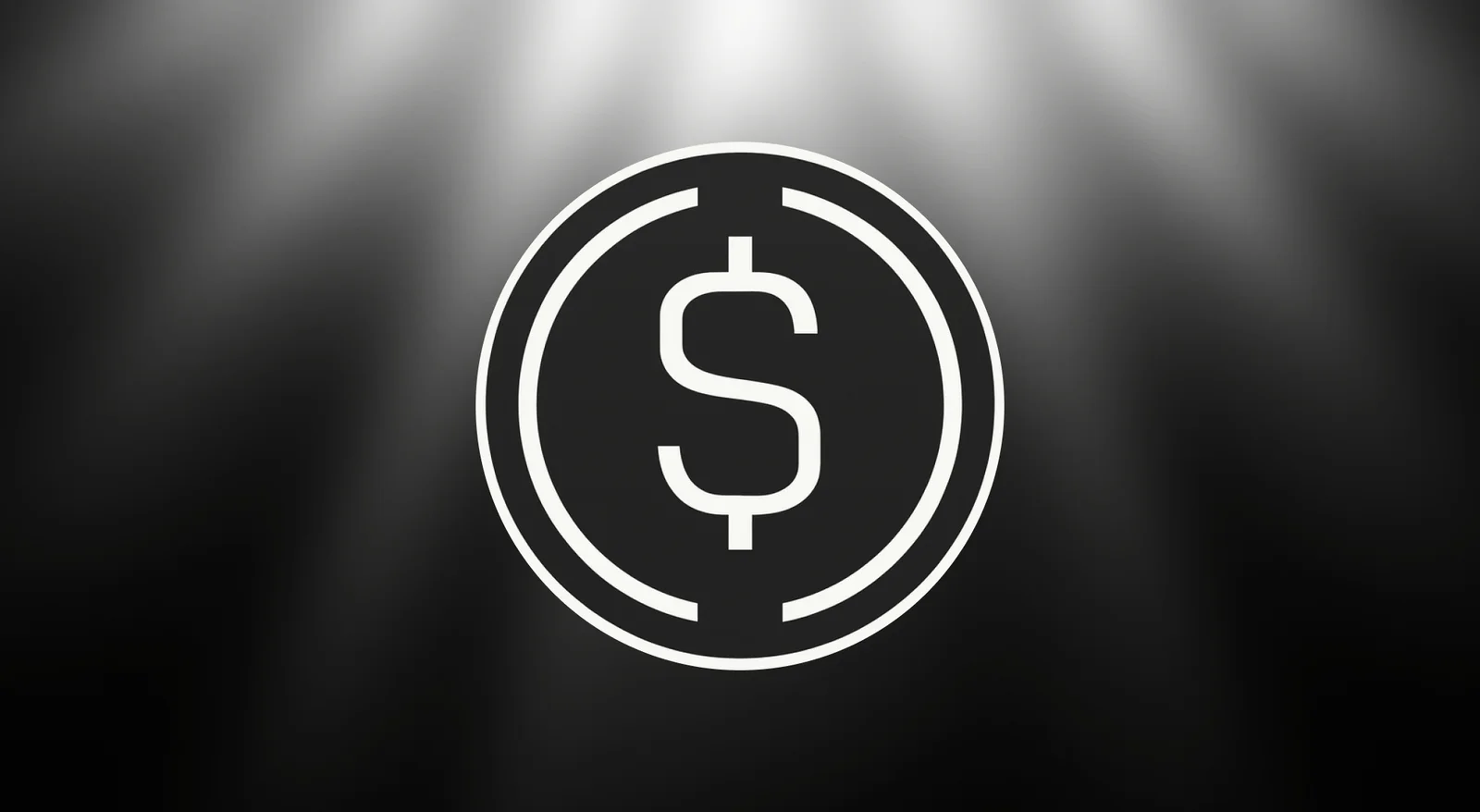
Trump Family Enjoys Golden Age in Crypto: $1 Billion Profit
US President Donald Trump and his family have once again made headlines over the past year with their earnings exceeding $1 billion from cryptocurrency investments. The Trump family's portfolio spans a wide spectrum, from meme coins to stablecoins and DeFi projects. These revenues stem from the growth of their assets in the crypto market, as well as token sales and brand licensing agreements for the family's projects.The Trump family's crypto returns shocked the marketWorld Liberty Financial (WLFI), one of the Trump family's most significant ventures in the crypto world, launched last year and quickly achieved billions of dollars in trading volume. Family members own approximately a quarter of the project's total supply. In addition to the WLFI tokens, meme coins issued in the names of Trump and Melania have also generated millions of dollars in revenue. According to on-chain data, the TRUMP and MELANIA coins generated a total return of approximately $427 million, while the WLFI token generated approximately $550 million. Furthermore, the sales volume of the family's stablecoin, USD1, reached $2.7 billion. According to FT calculations, Barron Trump, the youngest member of the family, is among those who have profited significantly from these ventures. At just 19 years old, Barron's wealth has surpassed $150 million, surpassing that of his mother, Melania Trump. Vanity Fair reports that Barron's wealth has risen from $80 million to $150 million in just a few months, largely due to his investments in WLFI and stablecoins. The Trump family's DT Marks DeFi LLC has received 22.5 billion WLFI tokens for use of the brand, and Barron owns a 10% stake in the company. A $750 million token deal with Alt5 Sigma has also added $41 million to Barron's income. The Trump family's crypto activities don't end there. Eric Trump announced plans to tokenize real estate through WLFI. He announced that they are working on a model that would allow the public to invest with small amounts by tokenizing a building currently under construction. With this system, investors can own a small portion of real estate by investing, for example, $1,000. They will also be offered additional benefits such as hotel services or exclusive access. Zack Witkoff, another co-founder of WLFI, stated that this model will create new investment opportunities for the Trump family's global supporters.Are these profits "ethical"?However, these massive gains have also sparked ethical debate. Trump's direct income from his family's businesses while in office has reignited allegations of conflict of interest. Some legal experts argue that the president's cryptocurrency activities on this scale challenge ethical boundaries. Critics argue that the Trump administration's soft line on crypto regulations has benefited these projects.Despite this, the Trump family has become a major powerhouse in the crypto industry, both financially and symbolically. Their income from digital assets has surpassed traditional sources of wealth. However, whether these gains are sustainable in the long term will depend on volatility in the crypto markets and the likelihood of tightening regulations. For now, the Trump family has attracted attention in the world of digital finance as well as in politics.
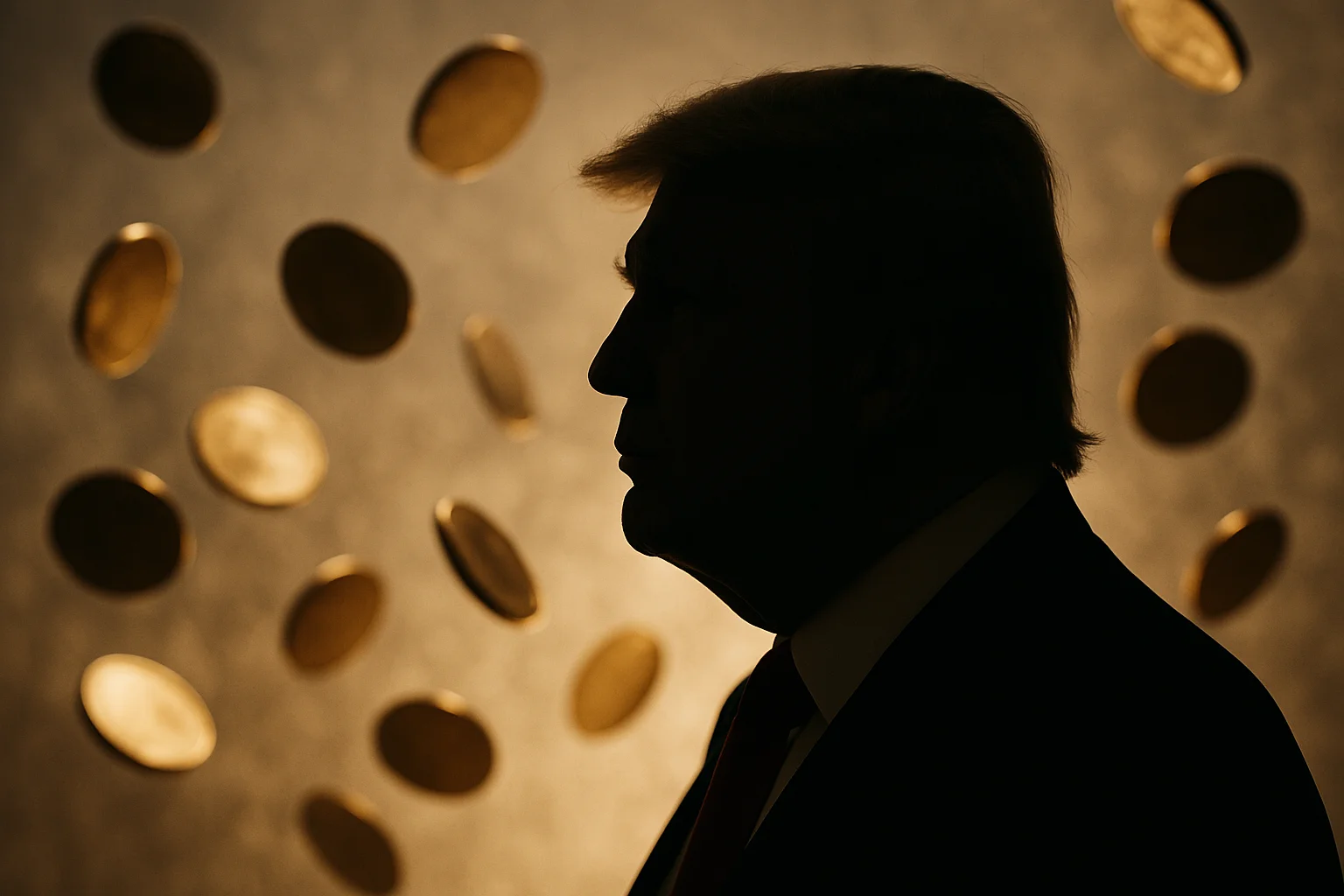
$300 Trillion Mistake: Stablecoin Disaster Sparks Financial Regulators into Action
On October 15, 2025, stablecoin company Paxos made a mistake of historic magnitude. The company mistakenly minted $300 trillion worth of unsecured tokens for PayPal USD (PYUSD). The error was quickly rectified with a burn after being discovered, but the incident caught the attention of the New York Department of Financial Services (NYDFS).NYDFS released a statement regarding Paxos's errorThe NYDFS confirmed that it had contacted Paxos and PayPal in a statement. The agency stated that this incident, which occurred as a result of "human error," constitutes a serious warning regarding the operational security of stablecoins. The incident was first noticed in on-chain data during a routine $300 million transfer. In this transaction, which took place between Paxos's own wallets, a simple numerical error in the system created 300 trillion PYUSD. The entire excess was burned within an hour, restoring balances and confirming that customer funds were unaffected. However, the magnitude of the incident caught the attention of the global financial market. Sam Ramirez, a former Salesforce engineer, commented on the incident, saying that Paxos “mistakenly reprinted a 300 million transaction as 300 trillion.” “This wasn’t software-related; it was pure human error,” he said. Following the incident, attention turned to stablecoin collateral systems. The lack of on-chain verification tools, the fragility of manual controls, and the frequency of system audits became a renewed topic of discussion.Chainlink community representative Zach Rynes argued that the incident proved that Proof of Reserve systems should be made mandatory. According to Rynes, if Chainlink’s PoR system had been integrated, a printing transaction of this magnitude wouldn’t have been possible without comparing it with reserves. “This incident demonstrates that on-chain verification systems are no longer a luxury, but a necessity,” he said.On social media, the incident was discussed from various perspectives. The financial blog Zero Hedge raised the question, “What exactly was this $300 trillion worth of ‘stablecoin’ collateralized by?” Some analysts argued that the error revealed a systemic vulnerability rather than a technical one. A DeFi researcher noted that the incident coincided with PayPal's announcement of a new liquidity partnership, saying, "Everyone dismissed it as a software bug, but the timing is striking. This happened at the very moment when traditional finance and tokenized securities met."Data analytics firm Santiment also stated that "the creation and burning of such a large supply in such a short time demonstrates the delicate balance of the stablecoin market." The total value of the stablecoin market is currently close to $310 billion. However, Paxos' $300 trillion error could have completely shaken the system. Regulators are now preparing to mandate Proof of Reserve integrations, instant audits, and more transparent reserve verification standards.

AVAX Comment and Price Analysis - October 15, 2025
AVAX Technical Analysis Rising Channel Structure Analyzing the chart, it’s clear that AVAX continues to trade within a strong ascending channel. During the recent market crash, the price briefly touched the lower boundary of the channel, but buyers quickly stepped in, leading to a solid rebound toward the $22 zone. The $20–$22 area is particularly important — not only as a technical support but also as a psychological level for many traders. As long as AVAX stays above this zone, the bullish structure remains intact.AVAX is currently trading around $22.69. The first resistance to watch is at $23.76. A breakout above this level with strong volume could open the door to higher targets at $26.23 and $27.18. The upper boundary of the channel, near $30.30, stands as the main medium-term target.On the downside, key support levels are $21.52 and $20.77. A daily close below $21 might trigger some short-term weakness, but the broader trend remains bullish and continues to support recovery.Summary:AVAX remains within a rising channel.Strong support: $20–$22Resistance levels: $23.76 → $26.23 → $27.18Main target: $30.30 (channel top)Holding above $21 keeps bulls in control

SOL Comment and Price Analysis - October 15, 2025
SOL/USDT Technical OverviewAnalyzing the Solana chart, we observe a symmetrical triangle pattern, signaling that the price is being squeezed between a rising support line and a descending resistance line. Such formations often result in sharp breakout movements once the market picks a direction.Currently, the price is around $200.77. The $195 level acts as both a short-term support and the lower boundary of the triangle. As long as the price holds above this area, the overall outlook remains positive. The next key resistance levels to watch are $219 and $227. A confirmed daily close above $227 could trigger a strong move toward $253 and potentially $295. Narrowing Triangle Formation According to a bearish scenario, a daily close below $195 could increase selling pressure, with the next support zones at $171 and $163. However, the broader trend remains bullish, and there’s a higher probability of a test toward the upper band of the triangle in the near term.Summary:SOL is consolidating within a symmetrical triangle.Current price: $200.77Support zone: $195Resistance zone: $219 – $227Above $227: Targets at $253 and $295Below $195: Supports at $171 and $163Watch for a rise in volume, as a breakout appears imminent.These analyses, not offering any kind of investment advice, focus on support and resistance levels considered to offer trading opportunities in the short and medium term according to the market conditions. However, traders are responsible for their own actions and risk management. Moreover, it is highly recommended to use stop loss (SL) during trades.

TRX Comment and Price Analysis - October 15, 2025
TRX Technical AnalysisLooking at the TRX chart, we can clearly see a symmetrical triangle formation taking shape.This pattern usually signals that the market is reaching the final phase of consolidation before a strong directional breakout. TRX is currently trading around $0.3169. The key short-term resistance sits at $0.3228, which also aligns with the upper border of the triangle. If the price manages to break above this level, we could see moves toward $0.3277 and $0.3433. A strong breakout above $0.3433 would confirm a bullish breakout, opening the door for a move toward $0.370.The level at $0.3095 is the critical support zone below. If the price closes below this level, we could see a drop toward $0.2967 and even $0.2791. The lower band of the triangle also sits near $0.309, making this area essential for maintaining the structure.Overall, the market is still in a tight consolidation phase, waiting for direction. Given the current momentum and volume profile, the probability of an upside breakout appears slightly higher. Narrowing Triangle In summary:TRX is moving within a symmetrical triangle pattern.Current price: $0.3169Key resistances: $0.3228 and $0.3277Above $0.3433, the next target is $0.370Support levels: $0.3095, $0.2967, and $0.2791The breakout direction will determine the next major move — volatility likely to rise soon.These analyses, not offering any kind of investment advice, focus on support and resistance levels considered to offer trading opportunities in the short and medium term according to the market conditions. However, traders are responsible for their own actions and risk management. Moreover, it is highly recommended to use stop loss (SL) during trades.

French Banking Giant Launches Euro Stablecoin
France-based investment bank ODDO BHF has reached the final stages of its long-awaited euro-backed stablecoin project. The bank officially launched its new digital asset, EUROD. EUROD will initially be listed on the Madrid-based crypto platform Bit2Me.ODDO BHF Makes Stablecoin MoveODDO BHF is a well-established financial institution operating in private banking, asset management, and institutional investment services. The bank manages over $150 billion in assets and is attracting attention with this new step. The launch of EUROD adds a new dimension to the growing competition among euro-based stablecoins in Europe.The bank had announced the EUROD project at the end of 2024 and planned to launch it by the end of 2025. Upon completion of regulatory approval, the token was launched ahead of schedule. EUROD is positioned as a MiCA-compliant digital currency designed for both individual and institutional investors, backed by a 1:1 euro collateral. ODDO BHF partnered with digital asset custody platform Fireblocks to develop the stablecoin's technical infrastructure. The bank aims to use EUROD both as a payment solution and as a reliable liquidity tool within the DeFi ecosystem.EUROD is structured in accordance with the transparency criteria set by the European Central Bank and EU regulators. This means that all reserves behind the stablecoin consist of actual fiat assets held in regulated banks. In this respect, EUROD aims to provide a safer environment against depeg risk during market volatility.Bit2Me CEO Leif Ferreira stated in a statement accompanying the listing announcement, "The listing of ODDO BHF's euro stablecoin on our platform is a significant step in our mission to offer regulated digital assets."Bit2Me has recently become one of the fastest-growing crypto platforms in Europe. The company first came to the fore last year when Tether led a €30 million investment round. The platform, backed by major players such as Telefonica, Unicaja, and BBVA, operates licensed throughout the EU and continues to expand into the Latin American market.EUROD's launch coincides with the launch of euro-backed digital assets such as Societe Generale-FORGE's EURCV banking stablecoin and Circle's EURC token.US dollar lags behindThe recent weakness of the US dollar has fueled interest in euro-backed assets. Circle's EURC supply has surpassed 229 million tokens in recent months, with its market capitalization approaching $266 million. ODDO BHF's EUROD aims to add banking security and regulatory transparency to this growing ecosystem.With EUROD's listing on Bit2Me, the regulated stablecoin market in Europe is becoming even more diverse.
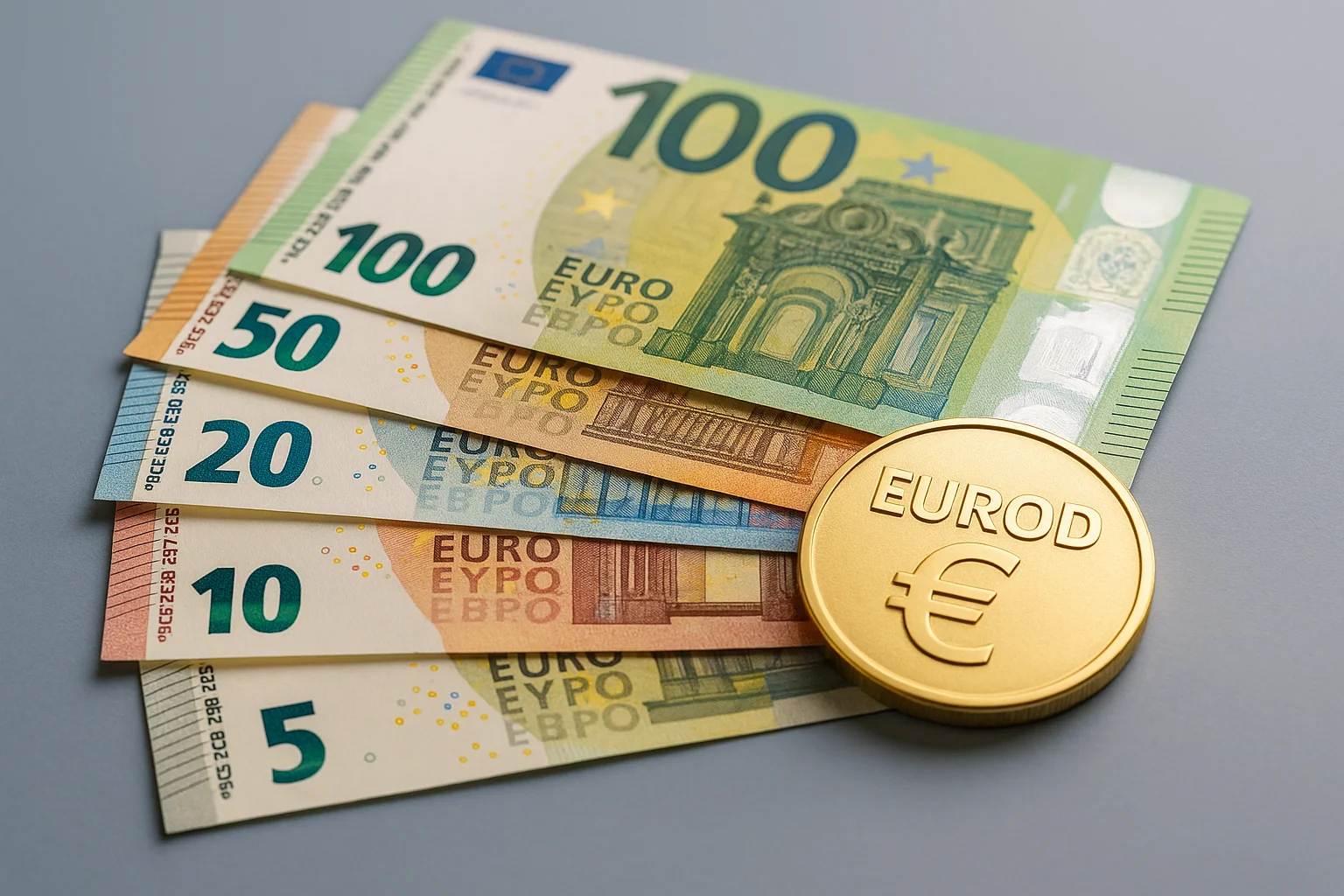
After Three Years, Celsius Wins Tether Case with $299.5 Million Settlement
One of the crypto world's longest-running legal battles has finally come to an end. Celsius Network, which went bankrupt following the 2022 crash, has won its lawsuit against stablecoin giant Tether after three years. Following the lawsuit, which was filed in the US, Tether agreed to pay Celsius $299.5 million.Celsius Wins Tether CaseCelsius Network has secured a $299.5 million settlement after three years in its lawsuit against Tether. This amount represents only 7% of the $4.3 billion the company initially sought. The decision, which resonated throughout the crypto market, is considered one of the largest cases concluded during Celsius's bankruptcy process.The case was filed in August 2024 in the US Bankruptcy Court for the Southern District of New York by the Blockchain Recovery Investment Consortium (BRIC), Celsius's representative. BRIC, a joint venture between VanEck and GXD Labs, was tasked with recovering Celsius's assets. Celsius claimed that Tether liquidated 39,542 Bitcoin during the 2022 market crash before the 10-hour waiting period in the contract expired.Tether denied these allegations and maintained that the transactions were legal. However, Judge Martin Glenn, presiding over the case, found Celsius's claims largely valid and allowed the proceedings to proceed. After approximately a year of review, the parties agreed to a $299.5 million settlement.GXD Labs managing partner David Proman said, “We are pleased to have concluded Celsius’s lawsuit against Tether. The faster and fairer completion of the process than anticipated is in the best interest of creditors.”Tether founder Paolo Ardoino also shared a post on the X platform: “We are pleased to have reached a final resolution to all matters related to the Celsius bankruptcy process.” Thus, the lawsuit was officially closed for Tether.What happened?Celsius Network halted user withdrawals following a liquidity crisis in the summer of 2022 and filed for bankruptcy in July 2022. A $1.2 billion deficit was identified on the company's balance sheet, and total investor losses were estimated to exceed $4.7 billion. The company's founder, Alex Mashinsky, pleaded guilty to commodity fraud and CEL token price manipulation in May 2025 and was sentenced to 12 years in prison.BRIC, which managed Celsius's restructuring process, prepared a payment plan for creditors by the end of 2023 by recovering some of the company's assets. The $299.5 million payment from Tether will be used as part of this plan and distributed as restitution to the aggrieved investors.The decision holds symbolic significance in the crypto market. Tether's acceptance of this compromise is seen as a significant turning point in the long-running "transparency of stablecoins" debate.At the time of writing, the CEL token price is trading at $0.05006317, representing a 10% increase in the last 24 hours.
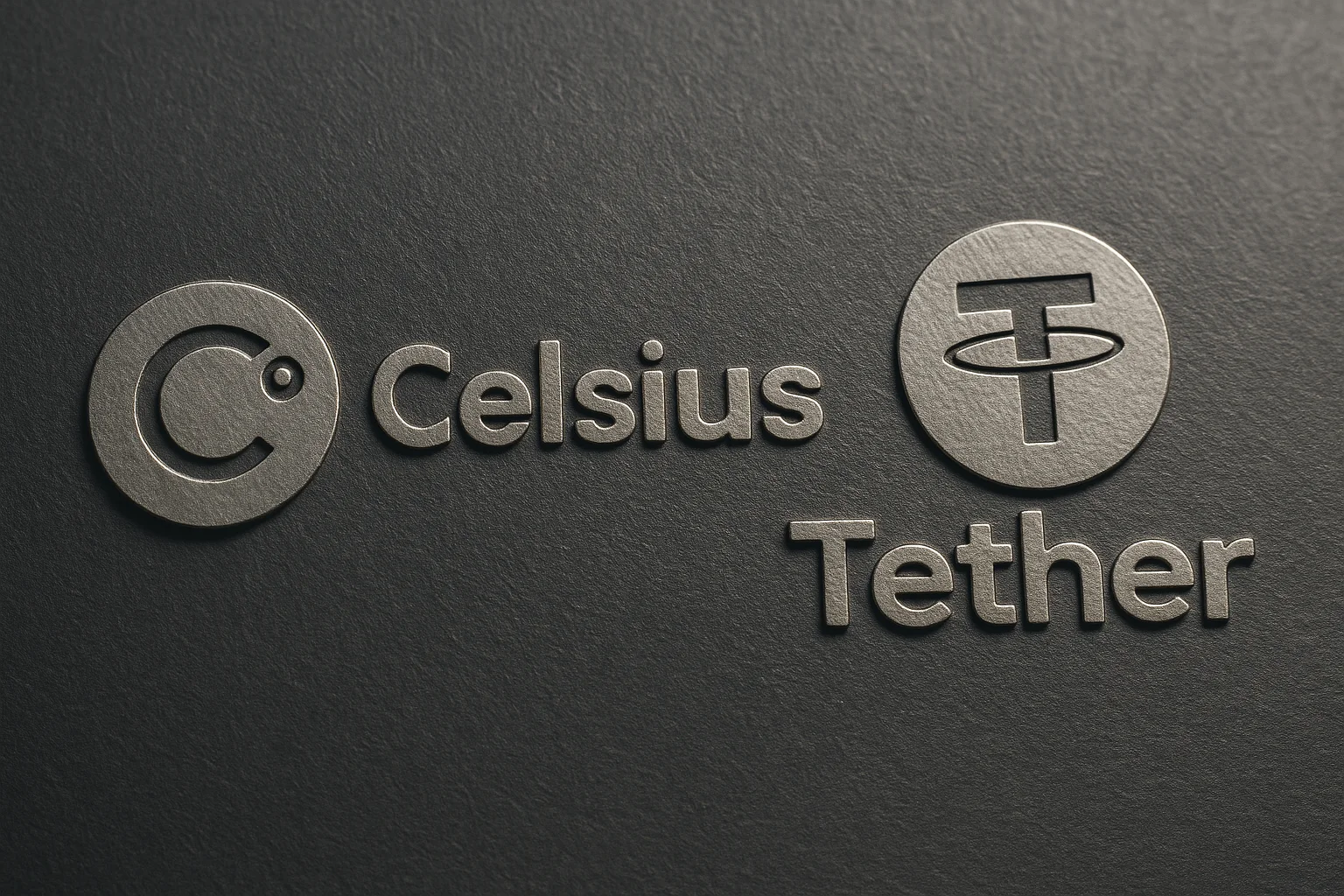
S&P Global and Chainlink Partner for Stablecoin Scores
Financial data giant S&P Global is partnering with oracle network Chainlink to bring stablecoin risk assessments onto the chain. This will give decentralized finance (DeFi) protocols direct and real-time access to S&P's independent "Stablecoin Stability Assessment" (SSA) analyses.Stablecoin data moves onto the chainS&P Global Ratings' SSA model scores stablecoins based on their ability to maintain their stable value against fiat currencies. These assessments are not credit scores but are based on criteria such as asset quality, liquidity, governance structure, repayability, technological infrastructure, and regulatory compliance.S&P launched this system in December 2023, assessing eight major stablecoins. As of today, the company tracks ten different stablecoins, including USDT, USDC, and Sky Protocol's USDS/DAI token. With the new integration, these assessments can now be used directly on the blockchain. The integration, provided through Chainlink's institutional data publishing infrastructure, DataLink, enables DeFi platforms and smart contracts to access S&P's risk analysis without manual intervention. This allows credit protocols, yield platforms, or investors to integrate this data directly into their smart contracts and automate risk management processes.Chuck Mounts, head of S&P Global's DeFi unit, described the partnership as "meeting our customers where they are.""By moving our stablecoin assessments on-chain via Chainlink's trusted oracle infrastructure, we enable market participants to seamlessly access S&P analysis on DeFi systems. This step strengthens both transparency and informed decision-making."Chainlink co-founder Sergey Nazarov described S&P Global Ratings' move as "a new milestone for institutional adoption.""S&P is one of the world's most trusted rating agencies. This partnership provides a critical framework for large institutions to use stablecoins more securely and compliantly." The Onchain SSA service will initially launch on the Ethereum Layer-2 network Base, supported by Coinbase. It is planned to expand to other networks based on demand.S&P Global has recently rapidly increased its digital asset footprint. Last week, the company introduced a new on-chain index combining 15 cryptocurrencies and 35 crypto-focused stocks. In August, it further solidified its risk assessments for DeFi projects by giving Sky Protocol a "B-" rating.On the Chainlink side, the sheer size of the system is striking. To date, the Oracle network has facilitated data transfer in more than $25 trillion in on-chain transactions and secured approximately $100 billion in total locked DeFi value.LINK price is decliningMeanwhile, the LINK price is trending downward. The coin has lost nearly 20% of its value over a seven-day period, partly due to the loss of momentum in Bitcoin and other altcoins over the weekend. At the time of writing, it is trading at $18.36.

CME Group Launches Options for Solana and XRP
CME Group, the world's largest derivatives exchange, has opened a new chapter in the crypto market. The company has now added Solana (SOL) and XRP futures options to its product line, already known for its Bitcoin and Ethereum futures. These products, regulated by the US Commodity Futures Trading Commission (CFTC), could boost institutional confidence in the crypto market.Solana and XRP options begin trading on CMEThe new options began trading on October 13th. These physically delivered contracts offer investors both hedging and more flexible position management. According to CME Group, Solana and XRP options are designed for both large-scale investors and smaller players with micro-contract sizes.This move comes at a particularly significant time, particularly after last week's flash crashes and outages on major exchanges. Leading crypto platforms like Binance and Backpack were temporarily down due to heavy trading during Friday's volatility. Some users even received compensation for liquidations caused by system errors. In this environment, CME's launch of new products on a regulated platform is a response to institutional investors' search for stability and confidence.CME Group has been a leader in Bitcoin and Ethereum options for years. The company achieved record trading volume with 9.2 million contracts in the second quarter of 2025. With the addition of Solana and XRP, CME now offers futures and options trading across four major crypto assets. This expansion is considered one of the strongest indicators that traditional finance is establishing stronger ties with crypto.Markets also welcomed this development. Solana rose to $197 in the hours following the news, while XRP rose to $2.55.CME's move aligns with macroeconomic developments. As global interest rate cuts continue, investors are turning to alternative assets that central banks cannot "print." In an inflationary environment, digital assets, like gold and silver, stand out for their scarcity. This trend is bringing fast, scalable, and direct financial-use crypto projects like Solana and XRP to the forefront. Solana's "proof of history" structure, which supports thousands of transactions per second, and XRP's cross-border payment infrastructure, in particular, differentiate them from Bitcoin and Ethereum. Both networks can complete transactions in seconds, making them among the few blockchains capable of handling the transaction volume of financial institutions. This feature of the two coins is also illustrated in the CME report, accompanied by the following chart:
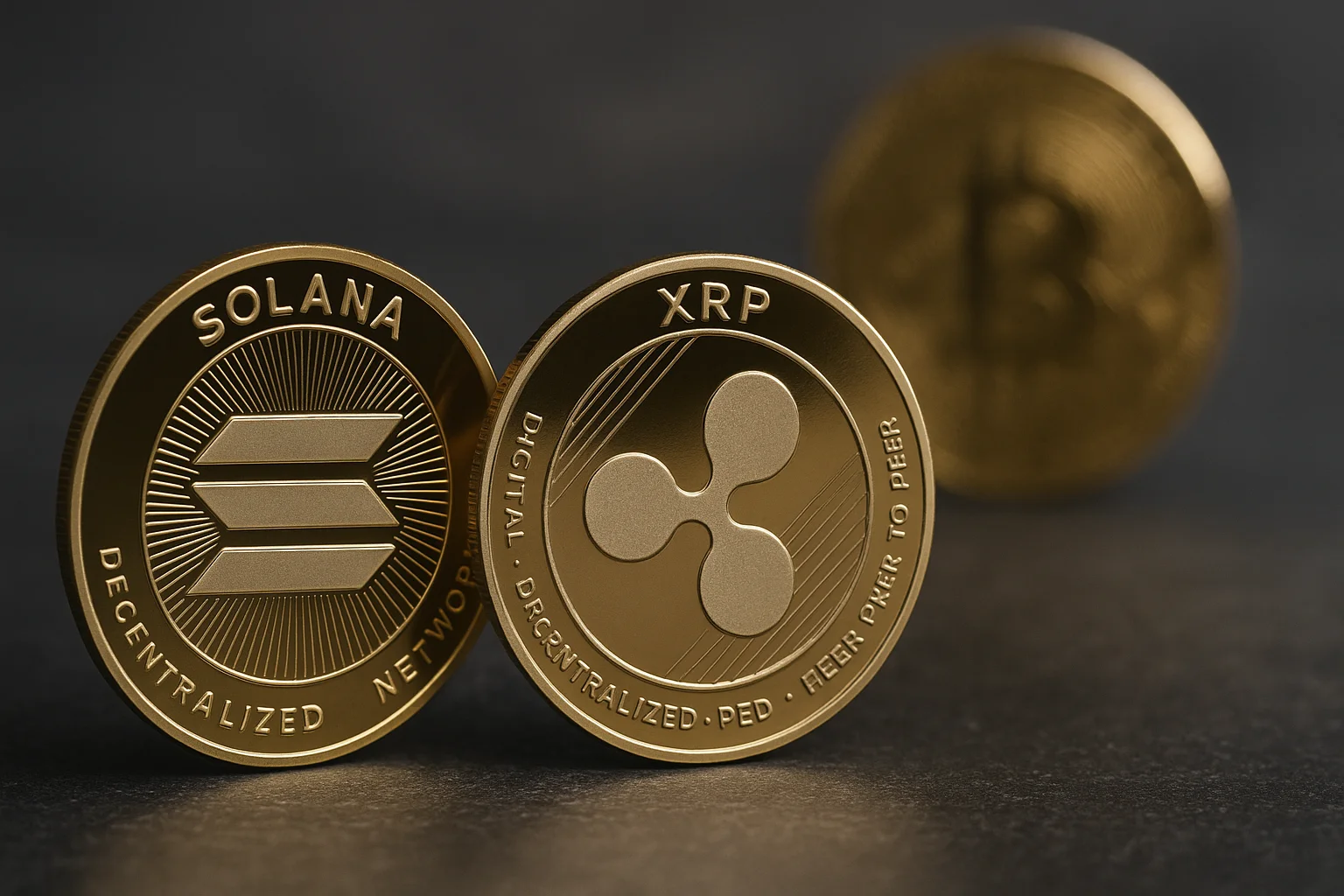
DASH Commentary and Price Analysis - October 13, 2025
DASH Technical Overview Falling Trend Theme When we analyze the DASH chart, we see that the coin has been trading inside a downward channel for a long time, meaning the price has mostly been trending lower over time.However, recently, the price made a strong bounce from the lower area of this channel and started moving upward again. This bounce could be an early sign of a possible trend reversal.DASH is currently trading around the level $55.59, which is both a short-term resistance zone and the upper boundary of the channel. The upward trend may continue to strengthen as long as the price holds above $50.51. If this move keeps going, the next target zones could be $64.12 and $69.80. If DASH breaks above these levels with strong volume, the price could potentially reach $90–$95 in the medium term.On the downside, if the price pulls back, the key support levels are $50.51 and $43.50. As long as these supports hold, the overall trend stays positive. But if the price drops below $39.79, it could signal weakness again, and the price might fall toward $28.To summarize:DASH has shown a strong recovery move.Currently trading around: $55.95Staying above $50 supports further upside.Resistance levels to follow: $64–$70 range.A break below $39 could restart the downtrend.Overall, the outlook remains positive, and a trend reversal seems possible.These analyses, not offering any kind of investment advice, focus on support and resistance levels considered to offer trading opportunities in the short and medium term according to the market conditions. However, traders are responsible for their own actions and risk management. Moreover, it is highly recommended to use stop loss (SL) during trades.
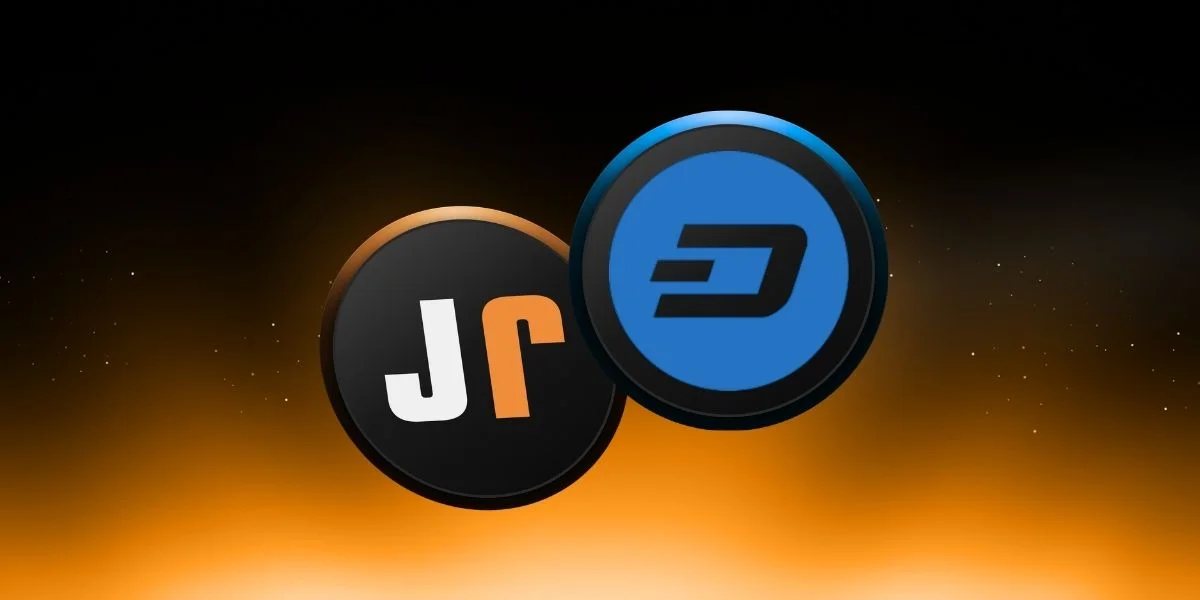
WLD Comment and Price Analysis - October 13, 2025
WLD Technical OutlookWLD continues to trade within a long-standing falling channel. The current price is $0.915, with the price moving between the midline and lower boundary of the channel. This suggests that WLD is approaching a strong support zone, where a potential rebound could begin.If the price closes above $0.982, it may target $1.07 initially. A breakout above $1.07 could then open the path toward the next major resistance at $1.41.However, if WLD breaks below $0.764, the downtrend could accelerate toward the $0.595–$0.544 support zone. In the case of a deeper decline, $0.41 stands as a critical long-term support level. Falling Channel Structure Summary:WLD remains in a falling channel.Current price: $0.915Bullish scenario: Daily close above $0.982 → targets at $1.07 and $1.41Bearish scenario: Close below $0.764 → potential drop to $0.595–$0.544Long-term support: $0.41Watch for a confirmed daily close above $0.982 to signal a potential trend reversal.These analyses, not offering any kind of investment advice, focus on support and resistance levels considered to offer trading opportunities in the short and medium term according to the market conditions. However, traders are responsible for their own actions and risk management. Moreover, it is highly recommended to use stop loss (SL) during trades.
